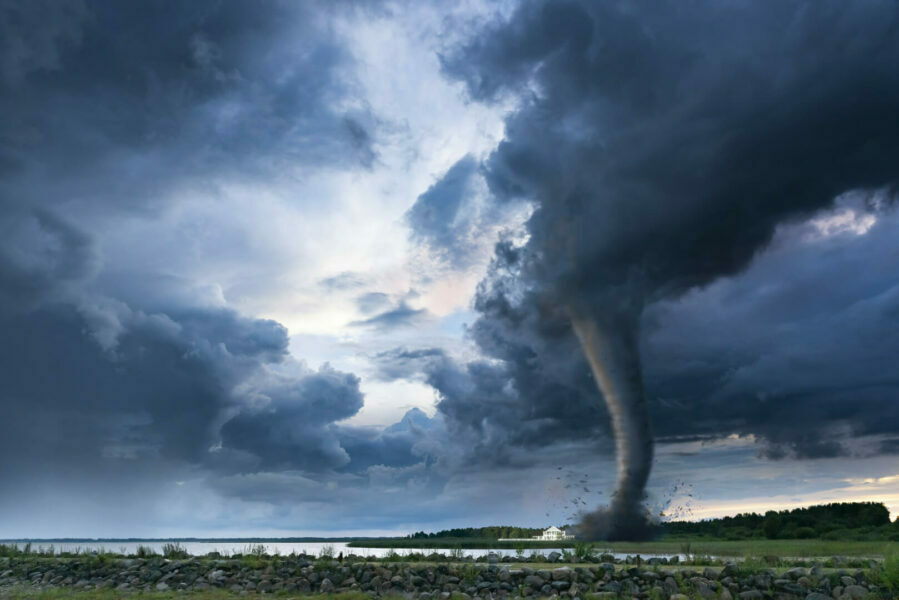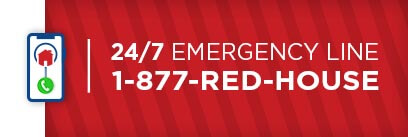
Last Updated: March 28, 2023
It’s Tornado Awareness Month! Tornadoes are among the most destructive, costly, and unpredictable natural hazards. Spring is considered tornado season for much of the U.S., but tornadoes can occur any time of the year, and can also be spawned by hurricanes passing through. On average, 1,200 tornadoes, some with wind speeds as high as 300 mph, occur annually throughout the U.S. According to the National Oceanic and Atmospheric Association (NOAA), the 2022 season saw 1,240 tornado reports. Tornadoes and related storms result in approximately $17 billion worth of damage across the U.S. on average each year.
Tornadoes Can Happen Anywhere!
You may be familiar with the terms “Tornado Alley” and “Dixie Alley”, areas in the Great Plains and Deep South that get hit year after year with a high number of tornadoes. It’s important to remember that tornadoes can happen and have been reported in all fifty states!
In Maryland, the most common time of year for tornadoes to occur is April through November, and averages about 10 per year. Tornadoes occur most frequently April through June in Pennsylvania, averaging 16 tornadoes per year. New Jersey averages around 4 tornadoes a year, with higher occurrences between July-November. Virginia averages 18 tornadoes a year, with more tornadoes from April through September. It’s important to remember that tornadoes can happen at any time of year and any time of day.
What to Do Before a Tornado
Although there is nothing anyone can do to prevent them, there are plenty of things you can do to prepare.
Tips to Be Prepared for Tornado & Storm Season
- Develop an Emergency Plan: Develop your emergency plan, communication plan, know the warning signs and how to monitor tornado watches and warnings.
- Check Your Insurance Policy: Ensure you have adequate coverage and read the fine print at least once a year so you fully understand your policy, deductibles, and exclusions.
- Monitor & Download Local and National Weather Apps and Alerts: Set up Wireless Emergency Alerts on your mobile phone. Ensure you have easy access to NOAA Weather Radio or local radio or TV for the warning information. Public Warning Sirens are used in many towns to warn people of tornadoes. Know the difference between tornado watches and warnings.
- Routine Maintenance: Get routine roof and exterior inspections to ensure your property, roofing and structural elements are sound and secure.
- Vetted Contractors: Have a list of preferred contractors available, including a general contractor, roofing contractor, electrician, plumber, and a water/flood remediation company.
It’s very difficult to see a tornado unless it forms a condensation funnel made up of water droplets, dust and debris. Coming on with little notice and deadly winds, tornadoes can be among the most destructive of all storms.
Know the Difference Between a Tornado Watch and a Tornado Warning

A Tornado Watch is issued when a tornado is possible. A Tornado Warning happens when a tornado is already occurring or will occur soon. Take shelter immediately!
What to Do After a Tornado
- Don’t enter the property until the emergency personnel has given the go-ahead. Check the people around you for injuries.
- Check the utility lines and appliances for damage. If you smell gas, open the windows and turn off the main valve. Don’t turn on lights or appliances until the gas has dissipated. Stay clear of fallen power lines or broken utility lines. Be aware of leaking gas pipes or fuel tanks nearby.
- Before you start trying to clean up, take photos and video footage of your home, business, and belongings for your insurance claim.
- Contact an expert, licensed contractor for a free inspection and damage assessment. professionally restore your property. Check out our article, 9 Tips to Choose a Quality Contractor.
- Call your insurance agent to open an insurance claim.
Rating Tornadoes
The Enhanced Fujita Scale or EF Scale below assigns a ‘rating’ based on estimated wind speeds and related damage. Given our technology today, reporting provides amazing accuracy and details. National Weather Service meteorologists can also estimate a tornado’s peak gust based on assessments of the damage left behind.

Tornado Stats By State
Check out NOAA’s National Centers for Environmental Information (NCEI) for your historic storm information.
Storm Damage? Contact Home Repair, LLC For a Free Inspection!
As a licensed general contractor with over 30 years of experience, we provide property damage restoration, storm damage repairs, roofing and construction after major storm events. Although tornadoes provide us with the least amount of warning, knowing what to do is one of the best things you can do to protect yourself, your family, and your property. Home Repair LLC proudly serves homeowners, businesses and commercial properties in Maryland, New Jersey, Pennsylvania, and Virginia.
RESOURCES
- Asurion: How to Set Up Severe Weather Alerts on your Smartphone or Smart Speaker
- Home Repair: 9 Tips to Choose a Quality Contractor
- Home Repair: Importance of Routine Roof Inspections
- Home Repair: 5 Dirty Little Secrets Your Insurance Company Doesn’t Want You To Know About That Can Save You Thousands!
- National Weather Service – Forecasts and Warnings
- Ready.Gov: Tornadoes
- NOAA: National Severe Storms Laboratory (NSSL): Severe Weather 101- Tornadoes
- NOAA: Maryland Tornado
- NOAA: New Jersey Tornado
- NOAA: Pennsylvania Tornado
- NOAA: Virginia Tornado




